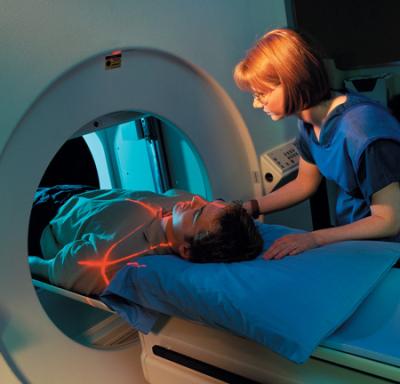National Asbestos Awareness Week will begin this year the first week of April. Non-profit groups like the Mesothelioma Research Foundation of America (MesoRFA) and the Asbestos Disease Awareness Organization (ADAO) use this week to increase public awareness about the dangers of asbestos exposure and the mesothelioma treatments available for the cancer caused by asbestos particle inhalation.
On March 9, 2011, Senator Max Baucus (D-MT) and cosponsors introduced and passed US Senate Resolution 63 – 112th Congress. This resolution (SR-63) designates the first week of April 2011 as National Asbestos Awareness Week. It urges the Surgeon General to warn and educate people about asbestos exposure, which may be hazardous to their health. Senator Baucus began his crusade to abolish asbestos use in 1999 when he wrote a letter to then Secretary of Health and Human Services Donna Shalala requesting immediate medical help and assistance for his home state area of Libby, Montana. Libby is a city that no one wants to live in because 1 in 8 residents has some kind of asbestos related ailments and estimates put the number of deaths related to asbestos mining at over 200. The city once boomed from the mining of vermiculite (an asbestos containing mineral) but now it has a growing number of the town’ residents being sickened by asbestos released in the air. The mine has been closed since 1990.
In 2002 EPA investigators found Libby, Montana to be contaminated with asbestos and began the process of containing the city. The EPA attempted to declare a Public Health Emergency in Libby that was thwarted by the previous Federal Government Administration’s Office of Management and Budget. Senator Baucus reported this failure in 2008, and on June 17, 2009, due in large part to Baucus’ reporting efforts, the EPA finally declared its first ever public health emergency in Libby, Montana.
Groups like MesoRFA and ADOA combine medical research, public and patient education, family advocacy and community support to compel a national and global rallying outcry for all nations to abolish asbestos mining and its use in manufactured products. Additionally, the groups seek to increase public awareness of the suffering experienced by patients with mesothelioma with the hope to fund research and find the quickest cure to this cancer disease caused by exposure to asbestos.
Asbestos is a carcinogen to humans and exposure to it can cause diseases such as mesothelioma, lung cancer and asbestosis. Research and studies from the World Health Organization (2004) provide estimates about asbestos-related disease from occupational exposure. Their results counted 107,000 deaths and 1,523,000 DALYs where a Disability Adjusted Life Year (DALY) is defined as the measure of overall disease burden expressed as the number of years lost due to ill-health, disability or early death. Other studies estimate during the next decade around the world there will be 300 deaths per day from asbestos related disease.
The ADOA will be having their 7th Annual Asbestos Awareness Conference (April 1 – 3, 2011 in Atlanta, Georgia) and will bring leading international experts together to discuss the impact of asbestos on public health, the environment, and the economy. This organization seeks to give asbestos victims and concerned citizens a united voice to raise public awareness about the dangers of asbestos exposure. It is an independent global organization with a mission dedicated to stop asbestos use and preventing asbestos-related.
The MesoRFA compliments the ADOA objectives with their mission to fund medical research leading to the quickest cure for mesothelioma. Mesothelioma is a cancer of the lining of the lungs caused by asbestos exposure. This cancer disease had few treatment options until recent research work created better options for mesothelioma treatments with the drug, Veglin. Today, the future looks very hopeful with improved treatment to those stricken by asbestos-caused mesothelioma cancer.
Many oncologists project the average post-diagnostic malignant mesothelioma survival time in sufferers is between one and two years. Also, traditional mesothelioma treatments have had no success in eradicating the disease and have produced limited success in extending a patient’s survival time. Therefore, new and experimental mesothelioma treatments have become increasingly popular as an option for cancer sufferers.
A new approach in finding a mesothelioma cure is a drug called Veglin being studied by Dr. Gill at the USC/Norris Comprehensive Cancer Center. Veglin is one of several newly developed non-chemotherapy drugs being tested in the ongoing struggle to combat malignant mesothelioma. The new drug is an anti-angiogenesis agent that works by cutting off the blood supply that cancer cells need in order to grow. Veglin is currently in the last part of Phase II Clinical Trials with the FDA and Phase III trials should begin sometime in 2011. Mesothelioma sufferers interested in taking part in the next clinical trial should talk with their doctor, and are encouraged to contact Dr. Parkash Gill for more information on Veglin and the trials to be had nationally.
Everyone is encouraged to participate in the national observation of Asbestos Awareness Week. Like the American Cancer Society, Senator Max Baucus (D-MT) and non-profit groups like the Mesothelioma Research Foundation of America (MesoRFA) and the Asbestos Disease Awareness Organization (ADAO), let us all use this week to increase public awareness about the dangers of asbestos exposure and available mesothelioma treatments, because everyone wants to see less cancer and more birthdays!



